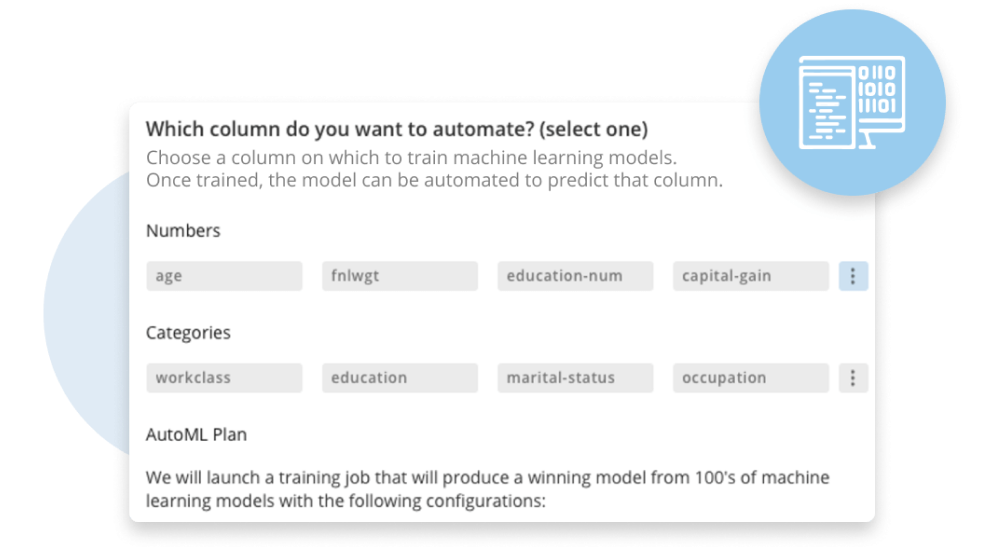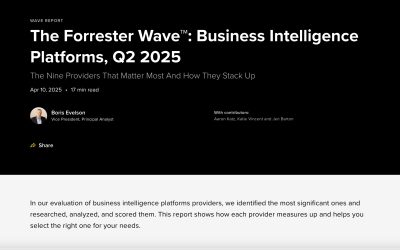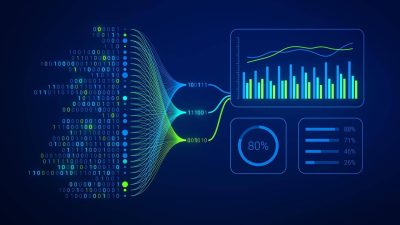How to leverage the power of machine learning
Machine learning is one of the most interesting and fastest growing sectors of the business intelligence industry. Businesses that want to make their BI implementations as successful as possible are investing in machine learning techniques.
The big draw of machine learning is the ways that it can transform the ways that businesses perform and act on business analytics. Machine learning can help businesses level up their analytics, allowing them to use them for greater insight.
Machine learning is especially useful for analyzing big data. As businesses expand their operations and collect more useful data, the data sets that they use for insight get bigger and bigger. Machine learning can help to make these data sets more manageable.
This technology can also provide its users with completely new analytical techniques, which allow users to leverage insights that were previously inaccessible. With machine learning, businesses can use new data streams like text and video to make analyses.
To make full use of machine learning capability, though, businesses need to figure out how best to integrate machine learning into their current data workflows. They need to figure out how and where they can most effectively leverage the power of machine learning.

What is machine learning?
Machine learning is a set of analytics, algorithms, and other computer programs that use previous experience to make future choices. In the same way that a person’s choices are affected by their experience, a machine learning algorithm uses what it already knows to make decisions about novel inputs.
The machine learning process starts with a large set of data called ‘training data.’ This is the initial data that the algorithm will use to make its decisions. It teaches the algorithm what ‘right’ looks like.
For example, a machine learning algorithm might be tasked with looking at street camera footage and deciding which frames contain cars. To know what a car looks like, the algorithm needs to be trained on a data set of pictures that do contain cars.
This way, the machine learning program actually knows what a picture of a car actually looks like. Using that knowledge, it can analyze new pictures, referring back to what it thinks a car is ‘supposed’ to look like.
This process relies on big data. The larger the dataset the algorithm has to work with, the more accurate its choices will be. If it’s trained on a small data set, it won’t have a very good idea of what a correct choice is.
After the machine learning algorithm has been trained, it can be deployed, but that’s not the end of the process. Developers need to iterate on their algorithms, checking its work to look for mistakes.
By flagging a mistake, the algorithm can learn from that mistake. It’ll make wiser, more accurate choices the more that it’s iterated on.
Where machine learning can boost business analytics
When people talk about them in general terms, the value of machine learning strategies isn’t that clear. A computer program that learns from its mistakes doesn’t seem like it’d be that revolutionary.
However, businesses can use machine learning to optimize, streamline, and improve every part of their business analytics strategy. By effectively leveraging the power of machine learning, businesses can revolutionize their analytical operations.

Pattern recognition
The clearest advantage of a machine learning program is its ability to spot patterns and trends. Because it’s completely data-driven, an algorithm can spot trends and realize patterns that would otherwise be invisible to a human analyst.
Machine learning algorithms are especially good at spotting trends and drawing correlations between seemingly unrelated data sets. They’re able to see trends between data sets that a human analyst wouldn’t even think about comparing together.
Automatic evaluation
In many businesses and workflows, there are situations where workers have to make decisions based on their own intuition, without the help of data analysts. Even the most data-driven businesses still find themselves in these sorts of situations.
Machine learning can replace human decision-making in areas where there’s enough pre-existing data to build an effective training corpus. By looking at how previous decisions were made, an algorithm can decide how the current decision should be made.
For example, imagine a social media site that’s trying to manage hate speech. In the past, human moderators would have to read every piece of content on the site and decide whether it violated the terms of service.
That’s just not feasible for the largest sites, so moderators are left to do random sampling, overwork themselves, or just let hate speech through to ruin the experience of other users.
In this case, machine learning can be extremely helpful. Algorithms can be trained on what hate speech usually looks like, and then they can be set to work analyzing all content on the site for things that look similar.
From there, the algorithm can be empowered to carry out the consequences of its decisions, muting or banning users who’ve violated the TOS.
Predictive analytics
Machine learning can improve the efficacy of a business’s predictive analytics, allowing them to make plans for the future and prepare for changes in their trends with much more certainty.
With a machine learning algorithm trained on past data trends, businesses can gain much more accurate forecasts about future trends. The boosted pattern recognition and trend spotting of machine learning is what makes this possible.
Through these algorithms, a business’s forecasting capabilities go from educated guesses to almost certain bets. Most businesses that attempt to use any sort of predictive analytics now use machine learning to power them.
In addition, the powerful pattern recognition of machine learning allows for more accurate modeling and what-if scenarios. With more accurate knowledge about your data relationships, it’s easier to see how metrics interact.

How to make your machine learning effective
Machine learning can bring all sorts of powerful business benefits, but these sorts of complex algorithms can be very hard for a business to make use of. This is especially true for businesses that don’t have a solid tech base.
Business intelligence can help to make machine learning more accessible, even for businesses that don’t have developers or technical support. By following some simple guidelines, even technically inexperienced businesses can implement effective machine learning.
Use big data
The bigger the data set that’s used for training, the easier it is to make an effective machine learning algorithm. Businesses that want to build algorithms to analyze their business data need big data sets to power them.
Businesses that aren’t able to collect a lot of data aren’t going to be able to make effective machine learning programs. By collecting all the data they can, businesses can make their data sets more effective for training algorithms.
If a business wants to build a big data strategy, they’re going to need a big data-focused BI tool to manage it. When a business starts talking about managing millions of rows at once, they need to make sure that their BI tool can manage it.
Market-leading, cloud-based BI tools are generally the most effective solutions for managing big data. If you’re interested in building a big data strategy, invest in a modern BI tool that can handle it.
Find a BI tool that empowers you
Many BI tools have machine learning features that can help businesses build algorithms and act on their data. These features are essential for businesses looking to implement machine learning strategies but who don’t have the technical base to make it work alone.
These features can automate and streamline much of the machine learning process, and implement it specifically on your data without any extra work. That way, businesses can use machine learning on their own data easily. Plus, it means your machine learning is happening in the same place as the rest of your analytics.
From there, a machine learning-enabled BI tool can power dashboards and visualizations with the implications of your algorithms. With BI, machine learning can empower your whole business.
Machine learning—using algorithms for insight
Machine learning can be a very powerful tool for building effective business analytics. It can completely transform your data strategy, allowing you to spot trends, find patterns, and automate tasks.
To effectively leverage the power of machine learning, you’ll need a BI tool that can work with you. If you’re in the market for a tool, look for one that’s machine learning-enabled. If you already have a tool but it won’t meet your machine learning needs, look for one that will.
Check out some related resources:

Domo Named a Strong Performer in The Forrester Wave™️: Business Intelligence Platforms, Q2 2025

Guide to ETL Data Modeling: Process, Techniques, and Best Practices






